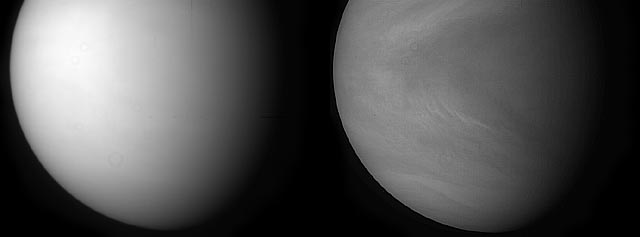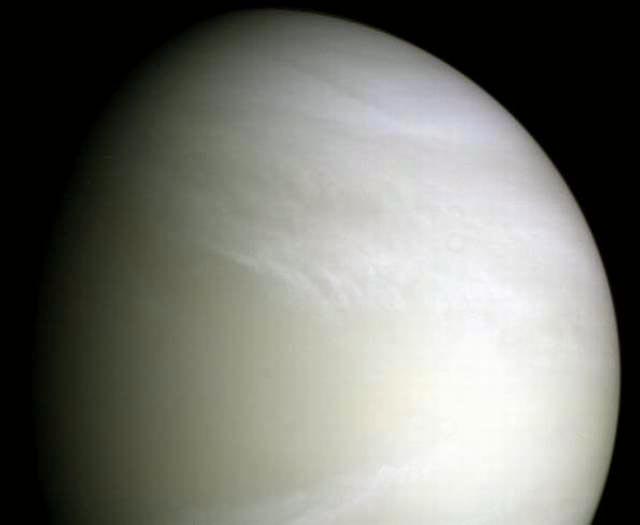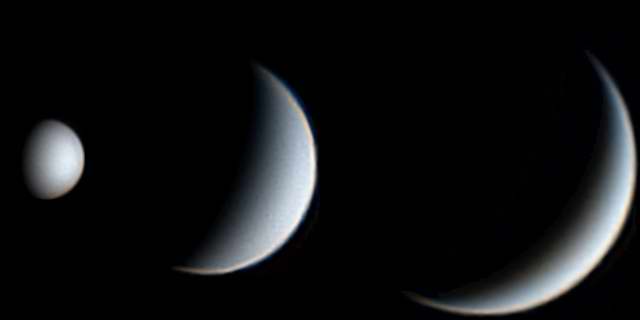
|
What does Venus look like? Unfortunately, space images are often distorted to reveal scientifically interesting features or to make them appear more colorful. The wavelengths measured may not even contain the information needed to compute an accurate color image. If they do, the calculation is non-trivial.
Has anyone yet calculated a perceptually accurate color image of Venus? |

| If a spectrum is known, an accurate color value can be computed. This is accomplished by converting to CIE XYZ and then into standard sRGB which modern monitors are designed to display correctly. On the left is the spectrum of Venus as seen from space, measured by the Cassini probe. On the right is the spectrum of the zenith sky, measured by the Venera 11 lander. Wavelengths plotted are 360 to 830 nm. |

|
Full spectral data is rarely available, and instead we must use views through color filters. Above, the Galileo probe captured venus through a clear filter (left) and through a 410 nm violet filter, which reveals the subtle yellow and white clouds. Unfortunately, many different color images could result in the same two clear and violet signals above.
Even when so-called red, green and blue filters are used, the problem is just as difficult, because the filters are not really the right red green and blue to just plug into the channels of a color display. Theoretically, information from the two images above and from the Cassini spectrum could be combined using Bayesian decision theory, to compute the most probable color image. Such a calculation is rarely undertaken. |

|
If colors are estimated correctly, there is a final issue of tone mapping. How bright does the image appear to the eye in a given context. Venus seen from space would be dazzling!
The image above, found an an Eastern European website, appears to be an honest attempt to show Venus as it might appear to a human observer. But I believe a perceptually accurate image has yet to be computed for Venus (or indeed for any planet). |

|
The first visible images of Venus were direct observation, and later telescopic observation. The images above, by the talented amateur astronomer
Damian Peach, show the appearance of Venus through a high-quality telescope, at various points in its orbit. When Venus is close, its diameter is almost visible to the naked eye (one minute of arc), but it is then lit from behind. With the recent discovery of infrared windows through the atmosphere, that turns out to be fortunate.
Don Davis has a great set of pages dedicated to the issue of Color in the Solar System and a special section devoted to The Colors of Mars. |
| Home, Back to Venus |